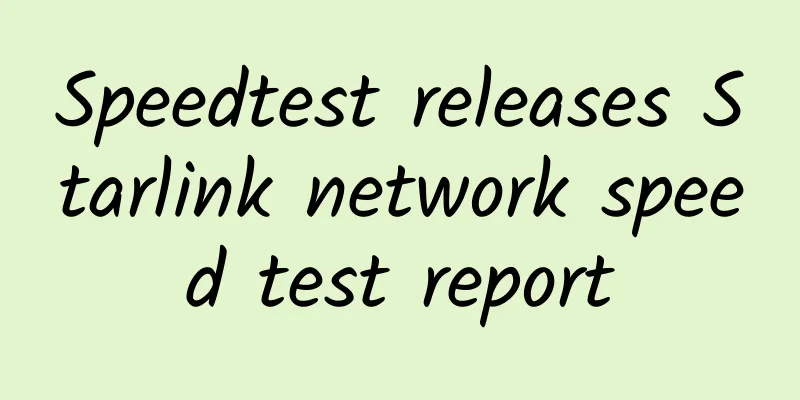Smart Manufacturing under 5G: A New Model of Smart Factory Automation

|
As a new generation of mobile communication technology, 5G technology meets the application needs of traditional manufacturing enterprises for wireless networks in their transformation to smart manufacturing, and can meet the needs of equipment interconnection and remote interaction in industrial environments. 5G technology plays a supporting role in industrial application fields such as the Internet of Things, industrial automation control, logistics tracking, industrial AR, and cloud robots. 1. Internet of Things: With the advancement of factory intelligent transformation, the Internet of Things, as a key supporting technology connecting people, machines and equipment, is receiving great attention from enterprises. This demand not only promotes the implementation of Internet of Things applications, but also greatly stimulates the development of 5G technology. 2. Industrial automation control: This is the most basic application in manufacturing plants, and the core is the closed-loop control system. 5G can provide a network with extremely low latency, high reliability, and massive connections, making closed-loop control applications possible through wireless network connections. 3. Logistics tracking: From warehouse management to logistics distribution, wide coverage, deep coverage, low power consumption, large connection, and low-cost connection technology are required. In addition, the end-to-end integration of the virtual factory spans the entire life cycle of the product. To connect the widely distributed sold goods, low-power, low-cost and wide-coverage networks are also required. Horizontal integration within or between enterprises also requires ubiquitous networks. 5G networks can well meet such needs. 4. Industrial AR: In the production process of smart factories, people play a more important role. Since future factories have high flexibility and versatility, higher requirements are placed on factory workshop staff. To quickly meet the needs of new tasks and production activities, augmented reality (AR) will play a key role and can be used in the following scenarios in the smart manufacturing process: For example: monitoring processes and production processes. Step-by-step guidance for production tasks, such as manual assembly process guidance; remote expert business support, such as remote maintenance. In these applications, auxiliary AR facilities need to be as flexible and portable as possible so that maintenance work can be carried out efficiently. 5. Cloud robots: In intelligent manufacturing production scenarios, robots need to have the ability to self-organize and collaborate to meet flexible production, which brings about the demand for cloud robots. 5G network is the ideal communication network for cloud robots and is the key to enabling cloud robots. 5G technology has become a key enabling technology to support the transformation of intelligent manufacturing. It can connect widely distributed and scattered people, machines and equipment to build a unified Internet network. The development of 5G technology can help manufacturing companies get rid of the relatively chaotic application status of previous wireless network technology, which has positive significance for promoting the implementation of the industrial Internet and the deepening transformation of intelligent manufacturing. The core of smart manufacturing is the smart factoryAs the information revolution intensifies, manufacturing elements such as machines, equipment, people and products are no longer independent individuals. Instead, they are closely linked together through the Industrial Internet of Things to achieve a more coordinated and efficient manufacturing system. The current transformation of the manufacturing industry can be seen as the integration and improvement of automation upgrades and information technology. This is not just about automation and replacing people with machines, but also about factories being able to make autonomous decisions, flexibly produce diversified products, and quickly respond to more market changes. The combination of artificial intelligence and manufacturing systems will be inevitable. By utilizing algorithm models such as machine learning, pattern recognition, and cognitive analysis, the capabilities of factory control and management systems can be enhanced, and the so-called intelligent manufacturing can be realized, enabling companies to gain better advantages in today's highly competitive environment. The smart manufacturing process mainly revolves around smart factories, and artificial intelligence plays an important role in smart factories. The Internet of Things connects all machines and equipment together, such as the networking of controllers, sensors, and actuators. Then, AI can analyze the data uploaded by the sensors. This is the core of intelligent manufacturing. With the development of industrial Internet of Things applications, network and physical systems will be closely linked together. That is, the Internet of Things will connect processors and sensors at the production site, allowing robots to communicate with each other, and the work of machines and people will no longer be strictly divided. The future manufacturing system will integrate people and machines. Digital twins play an important role. The entire process of intelligent manufacturing has a digital twin model. The system includes anything in the real world, which can be an application or an operating guide manual, etc. In addition, there is human-machine interaction in the intelligent manufacturing system, that is, the interaction between humans and robots. There is also the use of artificial intelligence to drive and optimize products and processes. Factories need to do some predictive maintenance or predict the energy consumption of machines, etc. More and more of these functions can be realized in smart factories. Prospects of smart factories in the 5G eraSmart factory is one of the important application scenarios of 5G technology. 5G network is used to seamlessly connect production equipment and further open up design, procurement, warehousing, logistics and other links, making production more flat, customized and intelligent, thus constructing a future-oriented smart manufacturing network. 1. Promote flexible manufacturing and realize personalized production The global population is approaching 8 billion, and the middle-class consumer group is expanding, which is expected to form a huge market, and thus have an impact on the consumption layout. Systems with customer needs and product "information" functions have become the new core of hardware product sales, and personalized customization has become a trend. In order to meet the diverse and personalized needs of different markets around the world for products, manufacturers need to update their existing production models, and production models based on flexible technology have become a trend. The International Manufacturing Plant Research Association defines flexible manufacturing system as: a flexible manufacturing system is an automated manufacturing system that can produce any range of product families with minimal human intervention. The flexibility of the system is usually limited by the product family considered when the system is designed. The advent of flexible production has given rise to the demand for new technologies. On the one hand, flexible production in enterprise factories places high demands on the flexible mobility and differentiated business processing capabilities of industrial robots. 5G uses its own incomparable unique advantages to help the large-scale popularization of flexible production. The entry of 5G networks into factories not only reduces the cost of cables between machines, but also utilizes the continuous coverage of high-reliability networks to enable robots to move without restrictions in their activity areas, reach various locations on demand, perform uninterrupted work in various scenarios, and smoothly switch between work content. 5G networks can also enable a variety of business needs with differentiated characteristics. In large factories, different production scenarios have different requirements for network service quality. The key to high-precision process links is latency, and critical tasks require network reliability and high-speed real-time analysis and processing of large-volume data. With its end-to-end slicing technology, the 5G network has different service qualities in the same core network (Copyright by CONTROL ENGINEERING China), which can be flexibly adjusted on demand. For example, the reporting of device status information is set to the highest service level. On the other hand, 5G can build a full-dimensional information ecosystem centered on connecting people and machines inside and outside the factory, ultimately enabling any person and any thing to share information with each other at any time and any place. As consumers demand personalized goods and services, the relationship between companies and consumers is changing. Consumers will participate in the production process of companies. Consumers can participate in product design across regions through 5G networks and query product status information in real time. 2. Comprehensive upgrade of factory maintenance mode The production scenarios of large enterprises often involve cross-factory and cross-region equipment maintenance, remote problem location, etc. The application of 5G technology in these aspects can improve operation and maintenance efficiency and reduce costs. 5G not only brings about the interconnection of all things, but also the information exchange of all things, which enables the maintenance work of future smart factories to break through the factory boundaries. Factory maintenance work can be completed by industrial robots or by humans and industrial robots in collaboration according to the complexity of the actual situation. In the future, every object in the factory will be a terminal with a unique IP, so that the raw materials in the production process will have the attribute of "information". The raw materials will be automatically produced and maintained according to the "information". People have also become terminals with their own IP. People and industrial robots enter the entire production process and exchange information with raw materials, equipment, and products with unique IP. While industrial robots are managing the factory, people thousands of miles away can also receive real-time information and perform interactive operations. Imagine that in a smart factory covered by 5G network in the future, when an object fails, the failure is reported to the industrial robot with the highest priority and “zero” delay. In general, industrial robots can complete repair work without human intervention based on their self-learning experience database. In another case, the industrial robot determines that the fault must be repaired by a human. At this time, even if people are on the other side of the earth, they can use a simple VR and remote tactile sensing technology device to remotely control the industrial robots in the factory to reach the fault site for repairs. The industrial robots simulate human movements in real time thousands of miles away, and people at this time are like being on site to carry out construction. 5G technology enables humans and industrial robots to handle more complex scenarios with ease. For example, in the case of a multi-person collaborative repair, even experts from different continents can use VR and remote tactile sensing devices to "gather" at the fault site at the first time. The large traffic of 5G networks can meet the massive data interaction requirements of high-definition images in VR. The extremely low latency enables people on the other side of the earth to transmit their movements to factory robots without error in the tactile perception network, and multiple people can control different robots in the factory to perform the next repair action. At the same time, with the help of the Internet of Things, people and industrial robots, products and raw materials are all directly connected to various relevant knowledge and experience databases. When diagnosing faults, people and industrial robots can refer to massive amounts of experience and expertise to improve the accuracy of problem location. 3. Industrial robots join the “management level” In the future, the production process of smart factories involves logistics, loading, warehousing and other scheme judgments and decisions. 5G technology can provide a fully cloud network platform for smart factories. Precision sensing technology acts on countless sensors, reporting information status in a very short time. A large amount of industrial-grade data is collected through the 5G network, and a huge database begins to take shape. Industrial robots combine the supercomputing power of cloud computing to conduct autonomous learning and precise judgment to provide the best solution. In some specific scenarios, with the help of D2D (Device-to-Device) technology under 5G, objects can communicate directly with each other, further reducing the end-to-end latency of the service, while diverting the network load and making the response more agile. The time for each production and manufacturing link has become shorter, the solutions are faster and better, and the production and manufacturing efficiency has been greatly improved. We can imagine that in the next 10 years, 5G networks will cover every corner of the factory. Industrial robots controlled by 5G technology have already walked out of the glass cabinets and moved freely in the workshop day and night to inspect and repair equipment, deliver materials, conduct quality inspections, or perform difficult production operations. Robots become middle and grassroots managers, coordinating production and making production decisions through information calculation and precise judgment. Only a few people are needed to undertake factory operation monitoring and senior management work. Robots have become advanced assistants to humans, replacing them to complete tasks that are difficult for humans to accomplish, and humans and robots are able to coexist in factories. 4. Allocate resources on demand Through network slicing, 5G networks provide solutions suitable for various manufacturing scenarios, achieve real-time high efficiency and low energy consumption, and simplify deployment, laying a solid foundation for the future development of smart factories. First, network slicing technology is used to ensure on-demand allocation of network resources to meet the network requirements in different manufacturing scenarios. Different applications have different requirements for latency, mobility, network coverage, connection density and connection cost, which put forward more stringent requirements on the flexible configuration of 5G networks, especially the reasonable and rapid allocation and redistribution of network resources. As the most important feature of 5G networks, the end-to-end network slicing capability based on a combination of multiple new technologies can flexibly and dynamically allocate the required network resources and release capabilities across the entire network to meet different needs. Based on the blueprint and input parameters provided by service management, network slices are created to provide specific network characteristics. For example, extremely low latency, extremely high reliability, extremely large bandwidth, etc., to meet the network requirements of different application scenarios. For example, in the smart factory prototype, in order to meet the critical transaction processing requirements within the factory, critical transaction slices were created to provide a low-latency, highly reliable network. In the process of creating network slices, it is necessary to schedule resources in the infrastructure, including access resources, transmission resources, and cloud resources. Each infrastructure resource also has its own management function. Through network slicing management, shared or isolated infrastructure resources are provided to customers according to their different needs. Due to the independence of various resources, network slicing management also performs collaborative management between different resources. In the smart factory prototype, a multi-level, modular management model is demonstrated to make the management and collaboration of the entire network slice more universal, flexible and easy to expand. In addition to critical business slices, 5G smart factories will also create additional mobile broadband slices and large connection slices. Different slices share the same infrastructure under the scheduling of the network slice management system, but do not interfere with each other and maintain the independence of their respective businesses. Secondly, 5G can optimize network connections and adopt local traffic diversion to meet the requirements of low latency. The optimization of each slice for business needs is not only reflected in the differences in network functional characteristics, but also in flexible deployment solutions. The deployment of network function modules within the slice is very flexible and can be deployed in multiple distributed data centers according to business needs. In order to ensure the real-time nature of transaction processing, the key transaction slices in the prototype have very high latency requirements. The user data plane functional modules are deployed in local data centers close to end users to reduce latency as much as possible and ensure real-time control and response to production. In addition, distributed cloud computing technology is used to flexibly deploy industrial applications and key network functions based on NFV (Network Function Virtualization) technology in local data centers or centralized data centers. The high bandwidth and low latency characteristics of 5G networks enable intelligent processing capabilities to be greatly improved by migrating to the cloud, paving the way for improving the level of intelligence. With the connection of 5G network, smart factory has become an application platform for various smart technologies. In addition to the application of the above four types of technologies, smart factory is expected to be combined with many advanced technologies in the future to maximize resource utilization, production efficiency and economic benefits. For example, with the help of 5G high-speed networks, energy efficiency-related data from key equipment manufacturing, production processes, energy supply and other links can be collected, and energy management systems can be used to manage and analyze energy efficiency-related data, promptly discover fluctuations and anomalies in energy efficiency, and make corresponding adjustments to the production process, equipment, energy supply and personnel while ensuring normal production, to improve the energy efficiency of the production process. When a customer order is placed, ERP automatically calculates the required raw materials and instantly calculates the purchase time of the raw materials based on the supplier information, ensuring that inventory costs are minimized or even zero while meeting delivery time. Therefore, smart factories in the 5G era will greatly improve working conditions, reduce manual intervention in production lines, and improve the controllability of the production process. Most importantly, they will use information technology to connect various processes of the enterprise, realize interconnection and interoperability of all links from design, production to sales, and on this basis realize the integration and optimization of resources, thereby further improving the production efficiency and product quality of the enterprise. |
<<: The 5G revolution started ten years ago
>>: What is QoS technology? What are its functions?
Recommend
What technical support is needed to build a fixed network architecture based on SDN/NFV?
As of the end of October 2016, the number of Chin...
In the post-epidemic era, AIOps unleashes new vitality in enterprise operation and maintenance
[51CTO.com original article] 2020 is destined to ...
Stay at home during the Labor Day holiday to watch TV series and play games. Learn how to set up WiFi network and say goodbye to lag
Although the current prevention and control level...
Why is HTTP 2.0 designed this way?
HTTP 1.0 was released in 1996, laying the foundat...
Ministry of Industry and Information Technology: Canceling the location of mobile phone numbers will increase the risk of telecommunications fraud
[[349030]] Can the location of mobile phone numbe...
Cure the difficulty of choosing! What are the differences between 5G, Wi-Fi 6, and Wi-Fi 6E?
[[428494]] This article is reprinted from the WeC...
The origin and development of Ethernet, you will understand after reading this!
Basics 1. About Ethernet Ethernet was developed b...
HostKvm New Year Promotion: 30% off Hong Kong International/Los Angeles VPS, 20% off other data centers
HostKvm also released a promotional plan for the ...
How do we correctly interrupt a thread that is executing? ?
[[358852]] The author has developed a simple, sta...
8 trends in infrastructure development in 2018
Cloud computing is gradually gaining favor among ...
ZJI newly launched Korean BGP+CN2 server, 20% off monthly payment starting from 440 yuan
ZJI has launched a new product! The business is a...
Talk about Kerberos kinit command and ccache mechanism
1. Introduction Hello everyone, I recently encoun...
Mobile data will no longer charge roaming fees? You may even spend more money because of it
Starting from July 1, the mobile data roaming cha...
Will 5G charges be "cheap"? Operators: Not very expensive
From the issuance of 5G commercial licenses to th...
RAKsmart: US/Hong Kong/Japan VPS starting from $1.99 per month, G-port unlimited traffic server starting from $199 per month
RAKsmart is an early-established foreign hosting ...









